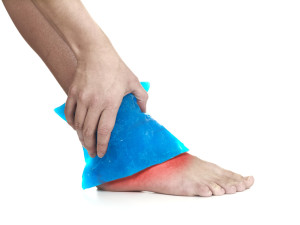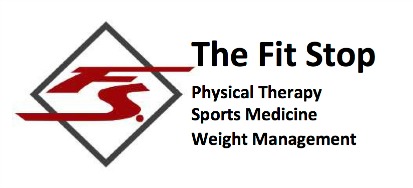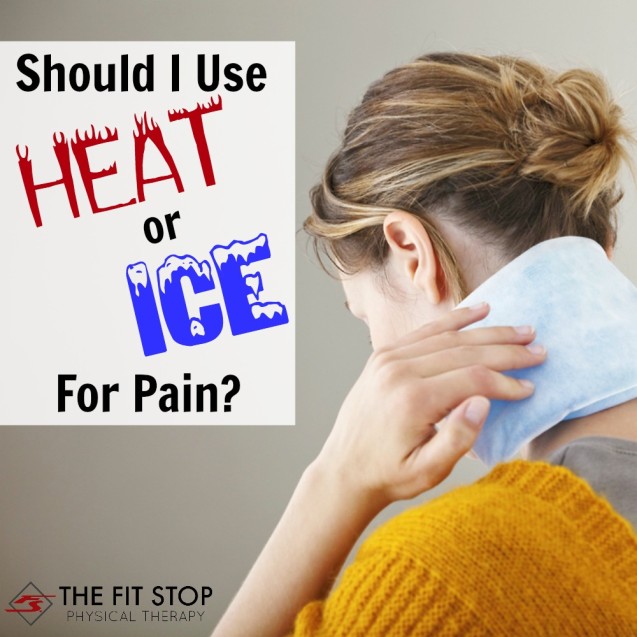Heat Or Ice For Pain?
Be sure to follow Fit Stop on Facebook to stay caught up on all our health advice and tips!
Should I put heat or ice on my injury?
We’ve all heard that you’re supposed to put ice on an injury. We’ve all heard that heat can help, too. But which one is it? And how do you know? As physical therapists, this is a question that we answer all day long from our patients, so today we wanted to share this knowledge with you! One of our sports injury experts, Jared Beckstrand, PT, DPT is here to answer your questions about the implications for heat vs ice when it comes to injury management. Keep reading for more! When we talk about thermal modalities and injury management, the issue really comes down to what happens to your capillaries at the cellular level…
 ICE: Cold is a vasoconstrictor… it causes the veins and arteries in a specific area to tighten up. This constriction limits the amount of blood flow into an area. In it’s simplest terms – ice causes things to just “slow down” overall. This can be beneficial in decreasing swelling in an area and slowing down the pain response. Cryotherapy is also a potent anti-inflammatory – any time there is inflammation in an area (pain, swelling, redness, tissue is warm) reaching for your ice pack is going to help to get rid of it.
ICE: Cold is a vasoconstrictor… it causes the veins and arteries in a specific area to tighten up. This constriction limits the amount of blood flow into an area. In it’s simplest terms – ice causes things to just “slow down” overall. This can be beneficial in decreasing swelling in an area and slowing down the pain response. Cryotherapy is also a potent anti-inflammatory – any time there is inflammation in an area (pain, swelling, redness, tissue is warm) reaching for your ice pack is going to help to get rid of it.
HEAT: Conversely, heat is a vasodilator – it causes capillary beds to relax, open up, and enable the passage of more blood flow into an area. Heating an area promotes relaxation and is typically our go-to for tight, sore, stressed, and otherwise overworked muscles. Heat can also improve fluidity and range of motion in joints. Any time someone comes in to my clinic who is “tight”, “sore”, “achy”, “stiff”, or “crampy” – I’m usually reaching for the heating pad.
So what are some common problems we encounter in the clinic and what is our advice regarding their management with heat or ice? Below are the top three categories of injuries we treat in physical therapy and what you should do to help them feel better:
Pulled muscle – We see a lot of muscle strains for a lot of reasons. Helping your friend move and now you have back pain? Running and feel the dreaded “pop” in your hamstring? Just finish an aggressive workout after not doing one for a while? Muscle strains are categorized by pain and tenderness in the muscle (not necessarily joint) following some sort of activity. My advice with these issues actually depends on when the injury happened. If it’s been one week or less you still have a strong inflammatory response going on that’s going to respond better to ice. If it’s been more than one week, you might start to reach for the heating pad to increase blood flow into the area and promote healing. Oftentimes I’ll even recommend both – heat the area before participating in an activity and ice it down afterwards. This will improve function while performing tasks and decrease pain you would otherwise experience afterwards.
 Joint sprain – Knees and ankles are the two we see the most-often; usually after tripping/stumbling/falling, getting hit (sports), and otherwise “tweaking” a joint. Sprains are usually accompanied by swelling, bruising, tenderness to the area, and pain with movement. If you think you sprained a joint, reach for the ice pack – all day long. One of the most common reasons people don’t think ice is very effective is they don’t do it nearly enough. Following an injury I recommend 4+ times a day; 15-20 minutes with the ice on followed by at least 20 minutes without ice before icing again (helps to normalize tissue temperature and avoid frostbite). Actively moving the joint through a pain-free range of motion and some gentle stretching will also help.
Joint sprain – Knees and ankles are the two we see the most-often; usually after tripping/stumbling/falling, getting hit (sports), and otherwise “tweaking” a joint. Sprains are usually accompanied by swelling, bruising, tenderness to the area, and pain with movement. If you think you sprained a joint, reach for the ice pack – all day long. One of the most common reasons people don’t think ice is very effective is they don’t do it nearly enough. Following an injury I recommend 4+ times a day; 15-20 minutes with the ice on followed by at least 20 minutes without ice before icing again (helps to normalize tissue temperature and avoid frostbite). Actively moving the joint through a pain-free range of motion and some gentle stretching will also help.
Tension / stiffness – I often refer to this one as “desk-job-itis”. Sitting/standing/working long hours (especially in one position) can put stress and tension on muscles that causes them to stiffen up, become “sore” and “achy”, and even cramp up on you. If left uncorrected this “achiness” can eventually lead to constant, chronic pain. While the best thing you can do for this type of pain is correct the mechanical cause (posture, muscle weakness, etc), heat is a great way to increase blood flow into the area of stiffness and promote muscle relaxation. Try 15-20 minutes on a heating pad in the morning and again at night; if you can work a 20-minute session into your day sometime that works even better.
Pain is a pain (every pun intended). Remember, though – there are things that you can do to actively eliminate your pain and soreness. These are some simple yet effective ideas that you can do to help your body get back on track towards pain-free functioning! If you have any questions or would like to discuss any of these ideas further, call one of our clinics and we would love to talk to you! Click the link below for the contact information at each of our clinic locations:
Heber City Salt Lake Farmington Murray
Fit Stop Physical Therapy – Farmington
172 N East Promontory Ste 200
Farmington, UT 84025
(801) 558-8612


